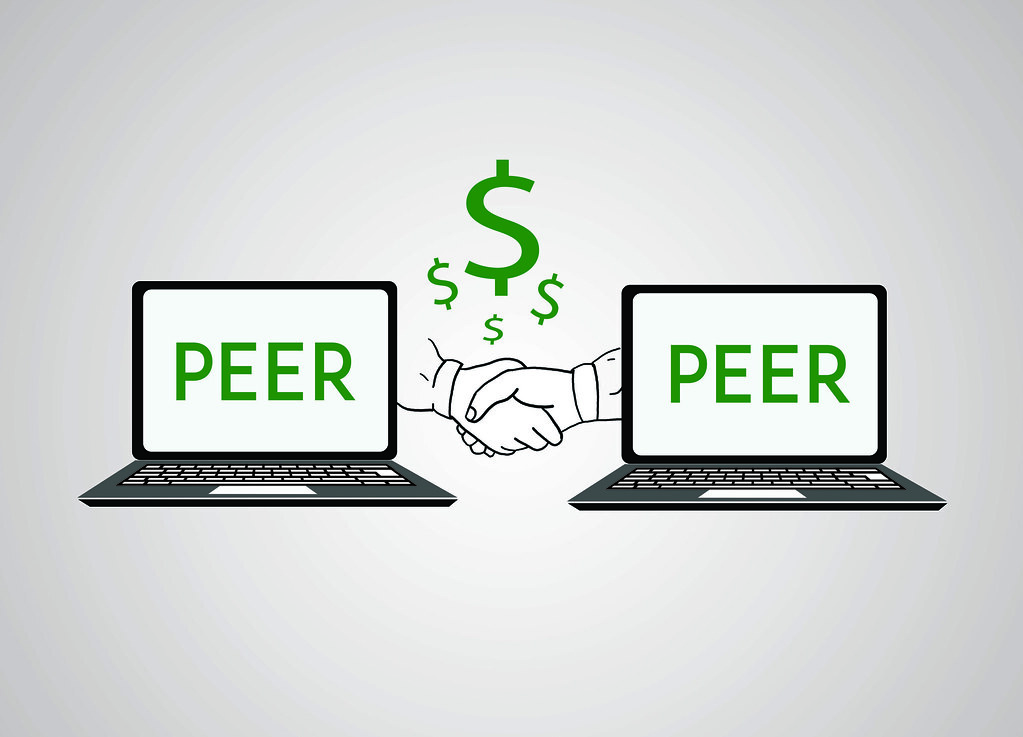Peer-to-Peer Lending: How It Works, Risks, and Why It’s an Attractive Investment Option
Peer-to-peer (P2P) lending is revolutionizing the way we think about borrowing and lending money. Unlike traditional loans, P2P lending allows individuals to lend money to others directly without the involvement of banks or financial institutions. This system opens up a world of new possibilities for both borrowers and investors. But how exactly does it work, and is it safe? Let’s explore the basics, the benefits, and the potential risks of P2P lending.
What is Peer-to-Peer Lending?
Peer-to-peer (P2P) lending allows individuals to borrow and lend money directly to each other via specialized online platforms, often referred to as P2P lending platforms. These platforms match borrowers with individual lenders without the involvement of traditional financial institutions like banks or credit unions.
 The process is simple: borrowers apply for loans through these online platforms, and lenders can choose which loan applications to fund based on the risk and potential return. Because P2P lending bypasses traditional financial intermediaries, it can offer competitive interest rates for borrowers and attractive returns for lenders.
The process is simple: borrowers apply for loans through these online platforms, and lenders can choose which loan applications to fund based on the risk and potential return. Because P2P lending bypasses traditional financial intermediaries, it can offer competitive interest rates for borrowers and attractive returns for lenders.
P2P lending has gained popularity due to its flexibility, lower fees, and ease of access. For borrowers, it offers a convenient alternative to traditional bank loans, while investors can enjoy the opportunity to earn returns that are higher than those from traditional savings accounts.
How Peer-to-Peer Lending Works
Advertisement
The peer-to-peer lending process begins with borrowers submitting a loan application on a P2P lending platform. This platform typically performs a soft credit check to assess the borrower’s initial eligibility. If the borrower meets the platform’s basic criteria, they proceed to create a listing specifying the loan amount and terms.
Once the loan listing is live, investors (individual lenders) can browse and choose which loans to fund based on factors such as the borrower’s credit rating, interest rate, and the loan purpose (e.g., personal loan, debt consolidation, or business loan). In some cases, platforms may allow borrowers to provide additional context, such as personal stories, to attract more lenders.
P2P lending offers borrowers a quicker, simpler process compared to traditional bank loans, with fewer eligibility requirements. Many people with less-than-perfect credit scores find P2P lending to be an attractive option.
Key Features of P2P Lending:
- Direct connection: Borrowers and lenders are connected directly via online platforms.
- Soft credit checks: Borrowers typically undergo soft credit checks before submitting a formal application.
- Lower eligibility barriers: Compared to traditional loans, P2P lending platforms are more flexible with credit score requirements.
- No intermediaries: There are no traditional financial institutions involved in the lending process.
The Role of Online Platforms
Online platforms act as intermediaries in P2P lending, facilitating loan applications, vetting processes, transactions, and repayments. These platforms handle much of the administrative work involved in connecting borrowers with lenders. For example, platforms manage credit checks, loan disbursements, and repayments.
Platforms also allow individual investors to diversify their investments by lending small amounts of money across various loans, thus spreading their risk. Some popular P2P lending platforms include LendingClub, Prosper, and Funding Circle.
For borrowers, these platforms often offer lower interest rates and more flexible lending terms than traditional banks or credit unions. Additionally, these platforms are designed to make the borrowing process easier and quicker, providing faster access to funds.
Platform Benefits for Borrowers and Lenders:
- Faster loan approval: P2P lending platforms process applications more quickly than traditional banks.
- Access to alternative financing: Borrowers can access loans even if they have less-than-perfect credit.
- Higher returns for investors: Investors may earn higher returns compared to traditional financial instruments.
Types of Loans Offered in P2P Lending
 P2P lending platforms offer a variety of loan options to meet the needs of different borrowers. Some common types of loans offered include:
P2P lending platforms offer a variety of loan options to meet the needs of different borrowers. Some common types of loans offered include:
- Personal Loans: Often used for medical expenses, debt consolidation, or home improvements.
- Business Loans: Small businesses can secure funding for expansion or working capital.
- Student Loans: Some platforms offer refinancing or consolidation options for student loans.
- Auto Loans: Borrowers can obtain funds for vehicle purchases or repairs.
Advantages of Peer-to-Peer Lending
Faster Access to Funds
P2P loans are often processed much faster than traditional loans. Once approved, borrowers may receive their funds within a few days, whereas traditional bank loans can take weeks to process.
Lower Interest Rates for Borrowers
Since P2P lending eliminates the need for traditional banks, the process involves fewer overhead costs. This leads to lower interest rates for borrowers. Additionally, the competitive nature of the platform allows borrowers to find favorable loan terms.
Attractive Returns for Investors
For investors, P2P lending provides the opportunity to earn attractive returns. Investors can choose loans based on their risk tolerance and the borrower’s creditworthiness. Returns typically range from 5% to 9%, with some investors earning more than 10% per year.
Diversification for Investors
Investors can diversify their portfolios by lending to multiple borrowers. This helps spread the risk and can reduce the impact of a single borrower defaulting.
Risks Involved in Peer-to-Peer Lending
While P2P lending offers many benefits, it also carries risks, particularly for investors. The main risks associated with P2P lending include:
- Borrower Default: One of the biggest risks for investors is borrower default. If a borrower fails to repay their loan, the investor may lose the money lent. Most platforms do not offer insurance for these investments.
- Platform Failure: The stability of the P2P lending platform itself is critical. If the platform goes bankrupt or faces operational issues, both borrowers and investors could be at risk.
- Lack of Liquidity: P2P loans are generally illiquid, meaning investors cannot easily sell or transfer their loans before they are repaid.
- Regulatory Risks: P2P lending is still a relatively new industry, and regulatory frameworks may evolve. Changes in regulations could affect the operations of platforms and the security of investments.
Risk Mitigation for Investors
- Diversification: Spread investments across multiple loans to minimize the impact of any single default.
- Platform Research: Choose platforms with solid reputations and regulatory compliance.
- Loan Grade Selection: Select loans with a risk profile that matches your investment goals and risk tolerance.
P2P Lending vs. Traditional Bank Loans
While both P2P lending and traditional bank loans serve similar purposes, there are key differences between the two:
| Aspect | P2P Lending | Traditional Bank Loan |
|---|---|---|
| Application Process | Primarily online, faster approval | In-person or online, may take weeks |
| Eligibility Requirements | More flexible, less stringent credit checks | Stricter credit score and history requirements |
| Interest Rates | Generally lower for borrowers, higher for investors | Fixed, based on creditworthiness |
| Loan Amount | Typically smaller loans | Larger loans available |
| Risk for Lenders | Higher default risk, no government insurance | Lower risk, FDIC-insured |
Is Peer-to-Peer Lending Safe?
While P2P lending is generally safe, it comes with inherent risks. Borrower defaults are the biggest concern for investors, and platform failure or operational issues can disrupt the lending process. However, P2P lending platforms do offer risk mitigation strategies, such as borrower risk ratings and loan diversification. Additionally, platforms like LendingClub and Prosper have established a track record, making them safer options for those considering investing.
For borrowers, P2P lending provides quicker access to funds, but it is important to carefully evaluate the terms and ensure that the loan fits their financial situation. While the rates may be competitive, it’s crucial to understand the repayment terms and any additional fees that could be charged.
Conclusion
Peer-to-peer (P2P) lending offers a promising alternative to traditional lending methods, both for borrowers and investors. By eliminating the need for banks and credit unions, P2P lending platforms allow for faster access to funds, more flexible loan terms, and potentially higher returns. However, borrowers and investors must be aware of the risks involved, including borrower defaults and platform failures. For those willing to diversify and do their due diligence, P2P lending can be a valuable tool in the world of finance.
